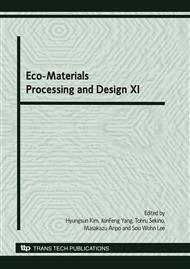p.117
p.121
p.125
p.129
p.133
p.137
p.141
p.145
p.149
Effects of Carbon Fiber Architecture on the Microstructure and Mechanical Property of C/C-SiC Composites
Abstract:
C/C-SiC composites were rapidly fabricated by a two-steps processing. Firstly a short-cut carbon fiber felt (SC) and a 2D carbon fiber felt (2D) were densified to C/C composites by a thermal gradient chemical vapor infiltration (CVI) method with vaporized kerosene as a precursor in 2h, 3h, 4h and 5h, respectively. Then the C/C composites were infiltrated and reacted with melting silicon to obtain C/C-SiC composites. The results show that, with increase of the CVI time, the densities of the two types of C/C-SiC composites decrease in the range of 2.28g/cm3 to 2.00g/cm3; their porosities increase ranging from 1.3% to 7.5%; the contents of the β-SiC and the unreacted Si phases in the composites decline. The flexural strength of the 2D_C/C-SiC composite is much higher than that of the SC_C/C-SiC composite when prepared in the same condition.
Info:
Periodical:
Pages:
133-136
Citation:
Online since:
July 2010
Authors:
Price:
Сopyright:
© 2010 Trans Tech Publications Ltd. All Rights Reserved
Share:
Citation:


